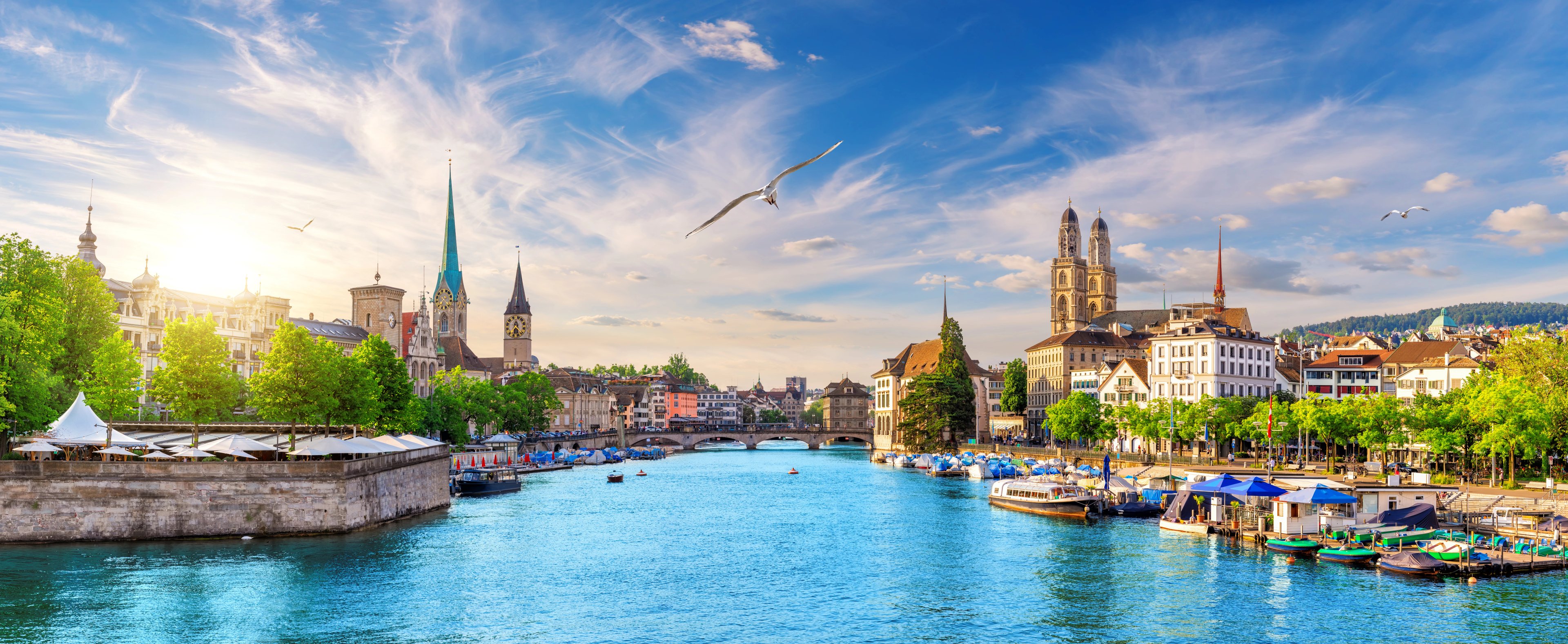Must-See Steder i Schweiz
Opdag Schweiz' bedste naturlige og kulturelle vartegn - fra søer og vinmarker til middelalderbyer og alpine pas, der er værd at køre til.

Cykling gennem Schweiz handler ikke kun om turene — det handler om alt det, du passerer undervejs. Søbyer, bjergpas, middelalderlandsbyer og UNESCO-listede vartegn udfolder sig mile efter mile, hvilket giver hver rute en følelse af opdagelse.
På tværs af landets fem hovedcykelregioner er dette de steder, der definerer Schweiz — fra vinmarksterrasserne over Genèvesøen til de brostensbelagte gader i Lucerne og de rolige kyster ved Bodensøen.

Her er de must-see højdepunkter, som enhver cyklist bør opleve undervejs:
1. Bodensøen & Nordlige Søer
Flade søstier, vinmarksskråninger og middelalderbyer gør Bodensø-regionen til en af Europas mest afslappede og maleriske cykeldestinationer. Delt af Schweiz, Tyskland og Østrig kombinerer den naturskøn skønhed med ubesværet cykling og grænseoverskridende kultur.
Denne klassiske rute cirkler søen og forbinder charmerende byer, slotte og havne - hver især tilbyder et indblik i regionens blanding af schweizisk præcision og bayersk varme. Undervejs skiller disse højdepunkter sig ud:
2. Central Schweiz (Luzern & Omegnen)
I hjertet af landet er Central Schweiz hvor Schweiz' historie — og nogle af dets mest ikoniske landskaber — mødes. Søer, foralpine bakker og charmerende byer skaber en region, der perfekt balancerer kultur og landskab.
Denne rute fanger Schweiz' essens i miniature — fjordlignende søer, rullende stigninger og postkort-perfekte byer. Den er ideel for dem, der ønsker at blande blid cykling med kulturelle stop og afslapning ved søen. Gå ikke glip af disse nøglepunkter:
3. Vestlige Søer & Vingaarde (Genevesøen & Vaud)
Strækkende sig fra Zürich til Lausanne, forbinder denne region Schweiz' sproglige og kulturelle verdener — fra tysktalende byer til de franskprægede søbredder i Vaud.
Terrasserede vingaarde, kurbyer og søpromenader gør det til et paradis for cyklister, der nyder scenisk mangfoldighed og en smag af schweizisk kultur ved hver vending.
Denne tværslandsrejse følger bløde terræn gennem historiske byer og vinmarksdale, der fanger Schweiz' elegance og variation i én rute. Disse fremtrædende steder afslører regionens karakter:
4. De Høje Alper & Graubünden
Schweiz' mest dramatiske landskaber venter i de østlige kantoner Graubünden og Engadin-dalen — hvor højderuter, gletsjerdale og afsides landsbyer definerer landets bjergsjæl. Hver opstigning belønner med vidtstrakte udsigter, historiske byer og en dyb følelse af alpin stilhed.
Denne ture følger Schweiz' legendariske pas og tidløse dale, der forbinder naturskønhed med århundreders kulturarv. Undervejs vil du møde:
5. Ticino & de sydlige Alper
Schweiz' sydlige kant bringer et strejf af Middelhavet til Alperne — et sted hvor søer glitrer under palmer, piazzaer summende med caféliv, og luften føles varmere og mere afslappet. Her mødes alpin eventyr med italiensk flair, indrammet af solskin og en langsom, charmerende atmosfære.
Denne rejse forbinder søer, bjergpas og grænseoverskridende landskaber og følger en rute fra Genève ind i de solbeskinnede regioner i syd. På denne rute oplever rytterne den perfekte blanding af kultur, klima og landskab med stop som:
Hvor skal vi hen næste gang?
Fra glitrende søer og vinmarkede dale til høje bjergpas og solbeskinnede sydbyer, forener Schweiz' cykelruter kultur, natur og eventyr i perfekt balance.

Udforsk vores fulde udvalg af Schweiz cykelture for at finde den rejseplan, der passer til din cykelstil, eller kontakt os, så hjælper vi dig med at planlægge en rute, der inkluderer alle de must-see steder undervejs.
.svg)
HÅNDPLUKKEDE EVENTYR
Kun de bedste eventyr rundt om i verden, udvalgt af vores team med en dybdegående viden om regionerne.

REJSE PÅ EGEN HÅND
Gå på opdagelse på egen hånd og med selvtillid, mens vi holder alt kørende bag kulisserne.
.svg)
VÆRDSÆT DIN TID
Når du har så meget at se til, så lad os tage os af ferieplanlægningen, så din værdifulde tid bliver der, hvor du har brug for den.
BETROET AF MANGE
Vi er en økonomisk beskyttet virksomhed, der har fungeret siden 2014, og med tusindvis af tilfredse kunder i fortiden sætter vi dig stadig først.
.jpg&w=3840&q=75)






























